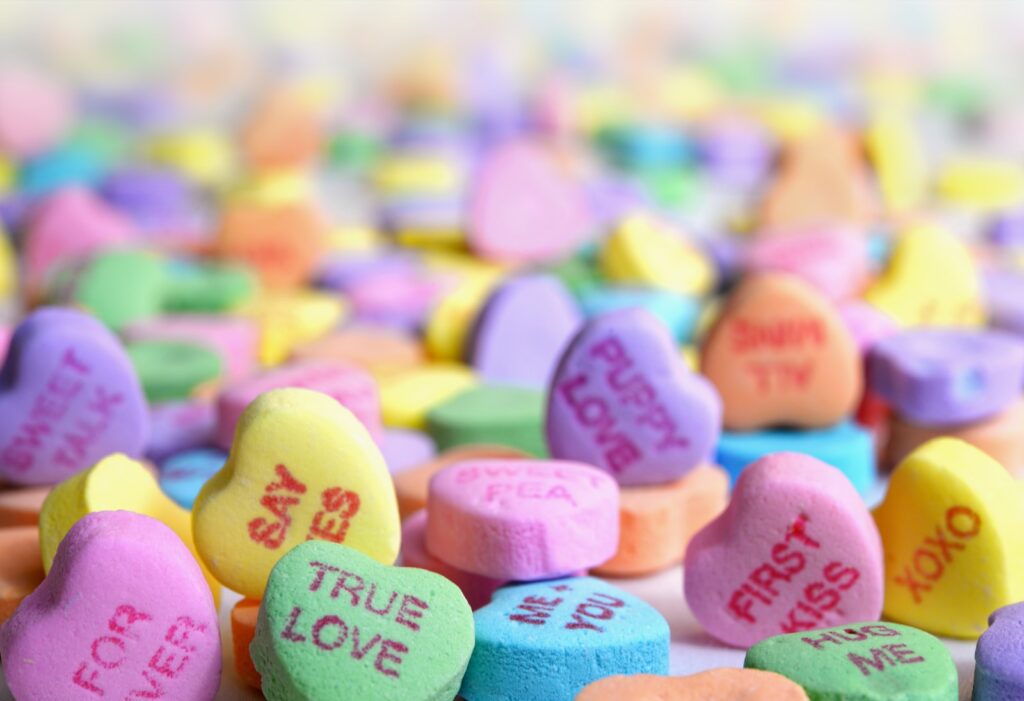Chocolate and love have an enticing fragrance. Valentine’s Day will be here before we know it, and lots of chocolate will be available. In store candy aisles, you can now find everything from enormous chocolate hearts to sticky gummy pleasures. We devour sweets till the last Easter Peep is gone, and Valentine’s Day appears to be the unofficial start of months of sugar addiction.
Don’t get us wrong. Delicacies are also something we enjoy. If we didn’t inform you about the consequences of sugar on your child’s (and your) teeth, we wouldn’t be your favorite Orthodontics office!. Don’t be afraid, though. When you need assistance, you can count on us to be there for you. We’ll show you which Valentine’s Day candy is good for your teeth and how to limit your sugar intake.
Cavities arise when bacteria in your mouth convert sugar to acid, causing your teeth’s enamel to erode. The upshot of this deterioration is tooth decay and cavities.
Sugar, like any other food, covers your teeth and gums. Saliva will help with some of it, but not all…especially the sticky, chewy, gummy stuff. Suckers and hard sweets are also hard on your teeth since they stay in your mouth for a long time and constantly press against the same teeth. Sugar encourages the growth of oral bacteria, which can lead to tooth decay if left on the teeth for too long.
We realize that we won’t be able to persuade everyone to give up candy, but we can assist our parents in setting limits and making informed decisions. The sort of sweets provided, as well as the period of time they are given, are quite important. We don’t want to take anything away from the fun. All that matters to us is that we aren’t missing teeth as a result of our excessive drinking! So how do you figure out which Valentine’s Day goodies are the healthiest?
- Pick sweets that are appropriate for the occasion. Soft chocolate is the best choice because it melts quickly and is less difficult to remove off your teeth. Avoid sticky, hard, or gummy candy that stays to your teeth for a long time.
- Candy should only be eaten after a meal as a dessert. This will increase your chances of drinking water and flushing sugar out of your system, as well as keeping sugar from bombarding your teeth all day.
- Hydrate. To assist the sugar leave your system, drink plenty of water after each meal. Saliva production is aided by staying hydrated, which is required for the removal of sugar and bacteria as well as the maintenance of dental health.
- Following a few minutes, brush and floss your teeth. After a sugary dinner, it’s a good idea to brush your teeth. Washing teeth that have been damaged by acid attacks, which happen every time you eat, is not recommended. Brushing 30 minutes later allows minerals to re-deposit on the enamel and the pH of your mouth to return to normal.
- Sealants. Dental sealants are a cavity-prevention treatment that includes covering teeth with a thin, protective layer to keep bacteria and food away. Sugar and bacteria are kept out of molar fissures and other difficult-to-reach places of the teeth with sealants.
- Don’t overlook non-sugary options. We’re not saying you can’t have candy hearts and chocolate to celebrate, but don’t make candy the main prize. Keep in mind that there is no such thing as the ideal Valentine’s Day sweets for your teeth. We are all human beings, no matter what the situation. Every now and again, we all want a little chocolate or candy. Keep in mind that Valentine’s Day is only one day, not a whole month!




